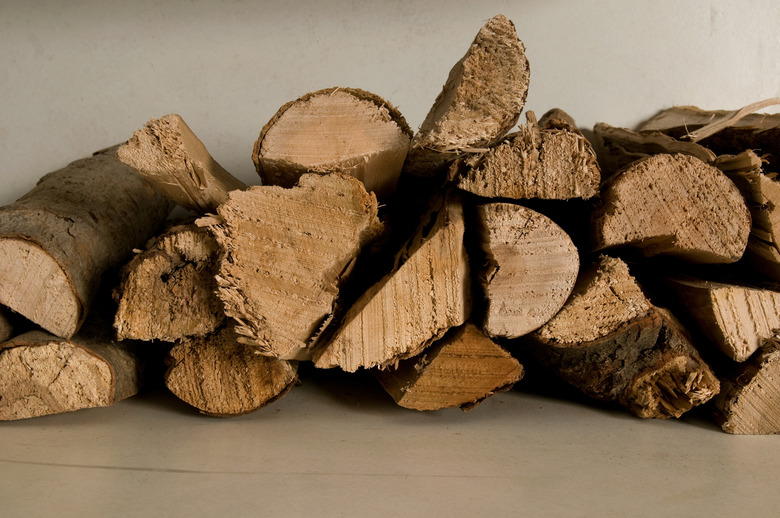How Long Does Hickory Firewood Need To Season?
Step 1
Hickory wood is a hardwood type, which means that not only is it hard to cut, it is also one of the hottest burning wood varieties. The hardness of the wood also influences seasoning time. Hickory also tends to be a harder fire to start, but the density of the wood increases the length of the burning process. Hickory fires, once started, can last several hours longer than those of softer, less dense woods. Other hardwoods include maple, pecan, ash, beech and walnut. Soft woods include pine, poplar, spruce and fir. Soft woods make great kindling because they ignite so quickly. They take less heat to burn, and usually burn much faster than hardwoods. It is best to use a hardwood for fires because of their ability to burn the same amount of wood much faster than softwoods.
Step 2
- Hickory wood is a hardwood type, which means that not only is it hard to cut, it is also one of the hottest burning wood varieties.
- They take less heat to burn, and usually burn much faster than hardwoods.
Seasoning Information
Step 1
Hickory's seasoning process is long, one of the longest all wood types. This is due to its dense nature and hard wood surface. While hickory wood can be burned as a green wood, it takes much longer to ignite and generally emits a lot more smoke. The water levels in green hickory can reach about 80 percent, but the ideal water level in seasoned hickory wood is around 20 percent. It usually takes about 12 months to dry hickory out that thoroughly. In dryer climates it may be possible to season the wood a little faster, but in general 12 months is the best time frame for producing a wood that ignites easily and produces a low smoke content.
Considerations
Step 1
One way to speed the seasoning process of any wood is to split it early on after cutting. Smaller pieces dry much faster. The best time to split wood is during the late fall or winter when the tree's water content is naturally lower due to the season. A dry wood breaks apart much easier than a wet wood. Consider placing the wood under a patio or overhang of some kind if you get a long rainy or snowy period in your area. Do not cover wood with a tarp directly as this will restrict air flow and trap water.
Step 2
- Hickory's seasoning process is long, one of the longest all wood types.
- One way to speed the seasoning process of any wood is to split it early on after cutting.
